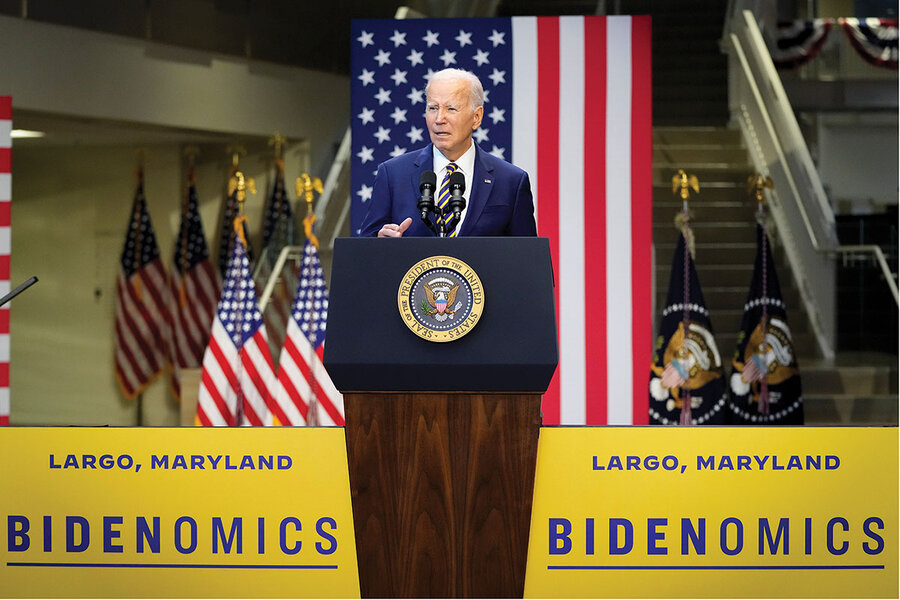President Joe Biden’s ‘stealth’ revolution
Loading...
In a time of hyperpolarization, “Bidenomics” isn’t likely to set hearts aflutter. Those who like President Joe Biden will line up behind his economic plan, and those who don’t will dismiss it.
But as the Monitor’s Simon Montlake reports in the Oct. 2 cover story, Mr. Biden’s plan is stealthily revolutionary.
It promises a greener economy, appealing to coastal liberals.
It is funneling manufacturing jobs to Georgia and Arizona, crucial states that he turned blue in 2020.
It won bipartisan support at least partly by playing on legitimate concerns that China is poised to dominate the semiconductor market, giving it control of the chips that drive the modern world.
Underlying the plan is also the Biden administration’s reading of the American public’s weariness with the small-government, free market policies that have guided the United States since President Ronald Reagan in the 1980s.
Whether this matters in next year’s presidential election is anyone’s guess. But at a time when blue and red states are actively working against one another on issues such as abortion, immigration, and LGBTQ+ rights, it marks an intriguing attempt to treat the country, well, as one country.
Long the laboratories for new policies and innovations, states have more recently also become the laboratories for division. A report in The Economist notes that 30 years ago, “less than a third of Americans lived in a state with a government controlled by a single party. Today nearly three-quarters do.”
Gerrymandering plays a role, but Alan Ehrenhalt, a contributing editor of Governing magazine, puts forward another theory: negative partisanship. States find identity and solidarity against other states. California sees Mississippi as running roughshod over human rights; Mississippi sees California as falling into a moral abyss. “That is a form of state loyalty that I would argue did not exist until the comparatively recent past,” Mr. Ehrenhalt says.
Whatever one thinks of Bidenomics, the attempt to treat America as one country shows how America’s states are in many ways complementary. For example, those manufacturing jobs aren’t just going to blue states. They’re going to red states, which often pay their workers less and have weaker unions. To the blue states, that is a problem. To red states, that is an opportunity. The data suggests this is what “re-shoring” looks like, bringing jobs back from abroad.
The fact is, America has always been fractured. The Economist report found that when states’ rights are on the upswing, these divisions become sharper. When the federal government is ascendant, these divisions are effectively covered over. The cycle repeats.
Forty years ago, Reaganomics put America on a new path of states’ rights and small government. Today, Bidenomics is an attempt to recalibrate, if not reverse, that course. Yet the impetus behind both is the same: to harness the power of a nation that possesses remarkable resources and a diversity of strengths.






